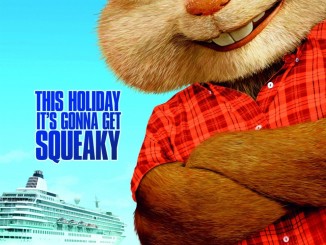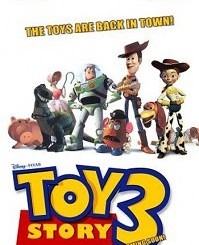We continue our look back at the cinematic decade that has just passed with a look at the company that redefined film animation, Pixar.
 It’s true that the era of Pixar started in the 1990s, when the company produced three films: 1995’s Toy Story, 1998’s A Bug’s Life, and 1999’s Toy Story 2. But the Aughts were when the animation studio became an overwhelming force in not just film animation, but at the box office as well.
It’s true that the era of Pixar started in the 1990s, when the company produced three films: 1995’s Toy Story, 1998’s A Bug’s Life, and 1999’s Toy Story 2. But the Aughts were when the animation studio became an overwhelming force in not just film animation, but at the box office as well.
Pixar has changed the world of films forever. At the start of the decade, computer generated animation was a rarity. Now, cel-based animation, such as last year’s The Princess and the Frog, are novelties. At the start of the decade, there was only Pixar and fledgling Dreamworks (which also started in the 90s with 1998’s Antz) in the field. Now, Dreamworks has become a powerhouse to rival Pixar, and other outlets such as Sony Pictures Imageworks and The Weinstein Group in producing CGI fare. Before, if you got one CGI animated film a year, it would be a lot. Now, each year features a multitude of CGI animated films for your movie going enjoyment.
 But what separates Pixar from the rest is the quality of their output. They appear to never be a company that settles for being as good as they can be. They strive to be better. And that results in them accepting challenges and advancing technology to suit their needs. Look no further than their first offering of the decade, 2001’s Monsters, Inc. Consider the lead character, a furry monster named Sully. In order to capture the look of the character, Pixar’s animators had to painstakingly animate every hair on the monster and in such a way that it would appear natural. This attention to detail is one of the reasons why they are a leader in the field.
But what separates Pixar from the rest is the quality of their output. They appear to never be a company that settles for being as good as they can be. They strive to be better. And that results in them accepting challenges and advancing technology to suit their needs. Look no further than their first offering of the decade, 2001’s Monsters, Inc. Consider the lead character, a furry monster named Sully. In order to capture the look of the character, Pixar’s animators had to painstakingly animate every hair on the monster and in such a way that it would appear natural. This attention to detail is one of the reasons why they are a leader in the field.
The focus on quality doesn’t just involve the technical, but also extends to the storytelling as well. On paper, films about the monster in your closet told from the monster’s point of view, a trash collecting robot on an abandoned Earth, and a rat that loves to cook haute cuisine might not seem like scintillating cinematic fare, but in Pixar’s hands it became great film magic. They have a unique ability to bring the most out of any concept, and tap into a sense of whimsy and wonder unlike anything seen since, well, Disney’s heyday in the 30s and 40s.
 As the decade went on, Pixar became one of the most artistically solid film producers of the decade. Take 2008’s Wall*E, which featured the first 30 minutes devoid of almost any dialogue or last year’s Up, where a couple’s life together from childhood to late adulthood was captured in about a 10 minute wordless montage. This kind of film making is almost impossible to pull off even in live-action. Pixar made it look easy and told more story on both occasions than other filmmakers did with full-length features.
As the decade went on, Pixar became one of the most artistically solid film producers of the decade. Take 2008’s Wall*E, which featured the first 30 minutes devoid of almost any dialogue or last year’s Up, where a couple’s life together from childhood to late adulthood was captured in about a 10 minute wordless montage. This kind of film making is almost impossible to pull off even in live-action. Pixar made it look easy and told more story on both occasions than other filmmakers did with full-length features.
While Pixar films have been critically well-received (the lowest rated at Rotten Tomatoes was Cars at respectable 75% fresh, the rest received no lower than a 95% rating), they have also been financial successes. Each Pixar film released in the past decade made it’s way into the top 10 grossing films of each particular year, with the lowest (again, Cars) making $461 Million worldwide.
 The success of Pixar critically and commercially might have also had an affect on the Academy Awards. In 2002, the award ceremony added a category for Best Animated Feature. All of Pixar’s films released in the decade have been nominated for the award, and it has won four out of the eight Oscar’s given out in the category ( for Finding Nemo, The Incredibles, Ratatouille, and Wall*E). Critics of the new category have complained that it was only created to keep the Pixar films out of the Best Picture race. That argument will be tested this year as the number of nominees for Best Picture are risen to 10. If Up doesn’t get a nomination in the main category, then this argument will gain more weight.
The success of Pixar critically and commercially might have also had an affect on the Academy Awards. In 2002, the award ceremony added a category for Best Animated Feature. All of Pixar’s films released in the decade have been nominated for the award, and it has won four out of the eight Oscar’s given out in the category ( for Finding Nemo, The Incredibles, Ratatouille, and Wall*E). Critics of the new category have complained that it was only created to keep the Pixar films out of the Best Picture race. That argument will be tested this year as the number of nominees for Best Picture are risen to 10. If Up doesn’t get a nomination in the main category, then this argument will gain more weight.
On the business side of things, Pixar’s relationship with its parent company, Disney, start at the beginning of the decade as contentious to say the least. Squabbles over the number of films included in their agreement and release dates for the films caused Pixar to announce that they were ending their partnership with Disney in 2004. After several less-than stellar in-house CGI films developed, Disney eventually bought out Pixar in 2006, allowing the company to remain its own identity and placing Pixar bigwigs in charge of all of Disney’s animation efforts.
 The next two years might be risky creatively, but most likely not financially, for Pixar as they release a second sequel to Toy Story on June 18th of this year and a sequel to Cars in June of 2011. They return to original projects in 2012 with The Bear and the Arrow and Newt set for release that year. So it looks like Pixar is set with film releases until the end of time, if the rumors about 2012 are correct.
The next two years might be risky creatively, but most likely not financially, for Pixar as they release a second sequel to Toy Story on June 18th of this year and a sequel to Cars in June of 2011. They return to original projects in 2012 with The Bear and the Arrow and Newt set for release that year. So it looks like Pixar is set with film releases until the end of time, if the rumors about 2012 are correct.
The Aughts were a great decade for Pixar. They established a domination over a new breed of animation that they helped perfect. They have produced consistently excellent product again and again, and have become one of the last bastions of creativity in Hollywood. It was a great decade for Pixar, yet we’re the ones that reaped the benefits.




